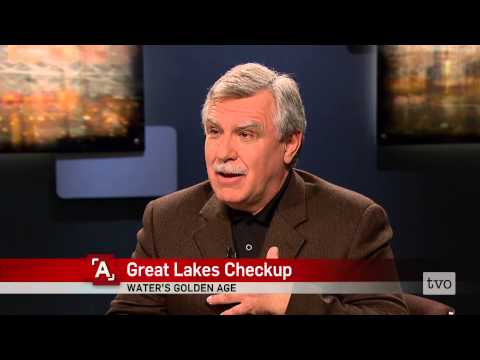 Biodiversity Without Boundaries 2015 will bring hundreds of top conservationists to the glimmering coastline of Lake Michigan, deep in the heart of Great Lakes country. Just as the Great Lakes define the region’s landscape, so too will they frame the discussion at BWB. A leading voice in that discussion will be this year’s keynote speaker: John Riley, senior science advisor to the Nature Conservancy of Canada and a foremost authority on all things Great Lakes.
Biodiversity Without Boundaries 2015 will bring hundreds of top conservationists to the glimmering coastline of Lake Michigan, deep in the heart of Great Lakes country. Just as the Great Lakes define the region’s landscape, so too will they frame the discussion at BWB. A leading voice in that discussion will be this year’s keynote speaker: John Riley, senior science advisor to the Nature Conservancy of Canada and a foremost authority on all things Great Lakes.
Author, advocate, ecologist, geologist, but above all else, a consummate conservation professional, few others have labored as exhaustively and as diversely as John has to help protect the remarkable freshwater resources of the Great Lakes region. John is a co-founder of the Partnership for Public Lands, whose determined vigilance in the late 1990’s and early 2000’s led to the regulation of 6 million acres of new protected areas in Ontario. He has co-founded four conservation foundations and helped lead the charge to establish conservation data centers in several provinces across Canada.
He has written books on Ontario’s natural features, the Hudson Bay, the Niagara Escarpment, and Georgian Bay Biosphere Reserves. His latest book, The Once and Future Great Lakes Country: An Ecological History, has either won or been shortlisted for several awards and has drawn praise from luminaries such as Margaret Atwood, Alice Munro, and Reed Noss.
His keynote address on the morning of April 29 will deliver his meticulously crafted perspective on the history and ecology of the Great Lakes—how modern society settled in throughout the watershed, and how those lakes and ecosystems responded. Most importantly, he will look at how recent decades have turned the tables on that dynamic, shifting man’s role—however slightly—from one of exploitation toward one of restoration.
“We’ve had a fantastic run at this place over 400 years—the first 250 or 300 of which were a demolition derby, and the last 100 of which have been quite a piece of restoration. It’s really a world example,” he told the Canadian news show TVO. “But—can you think of another world resource where 20 percent, almost, of [a] resource is under the jurisdiction of less than a half a percent of the global population? People are going to take us to task on our record.”